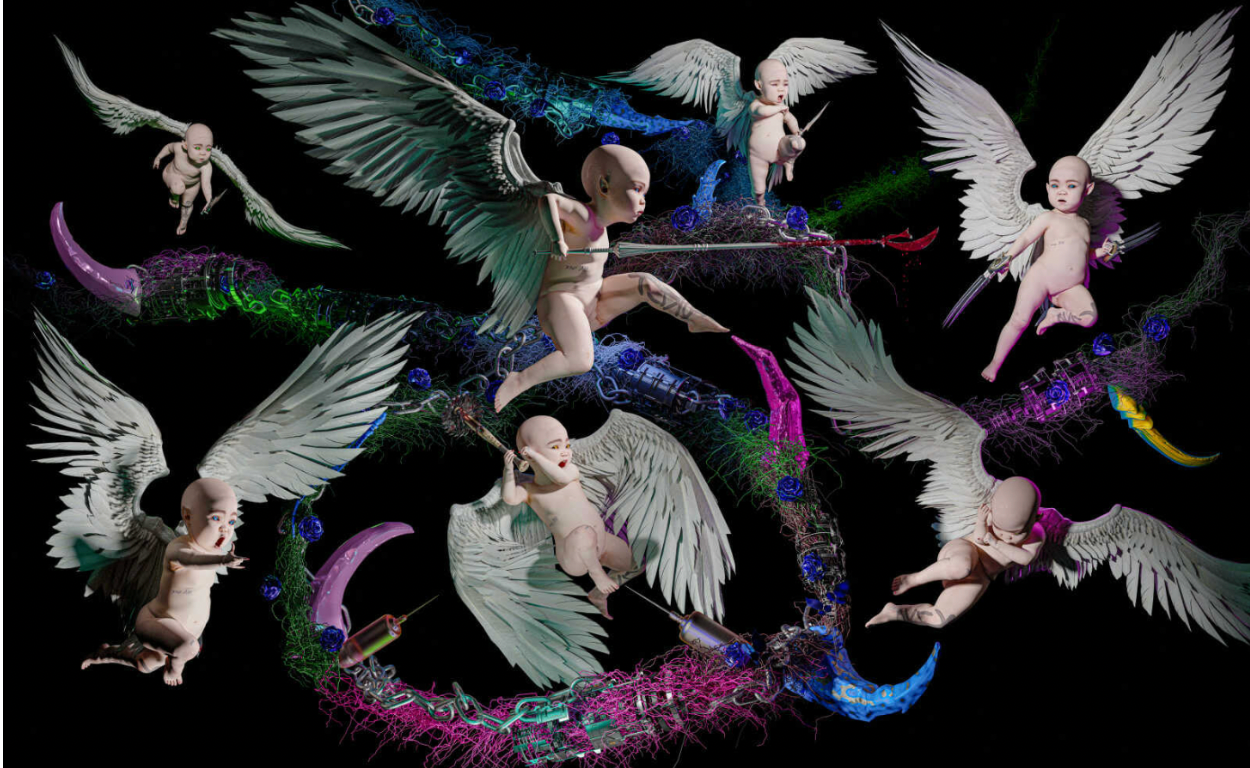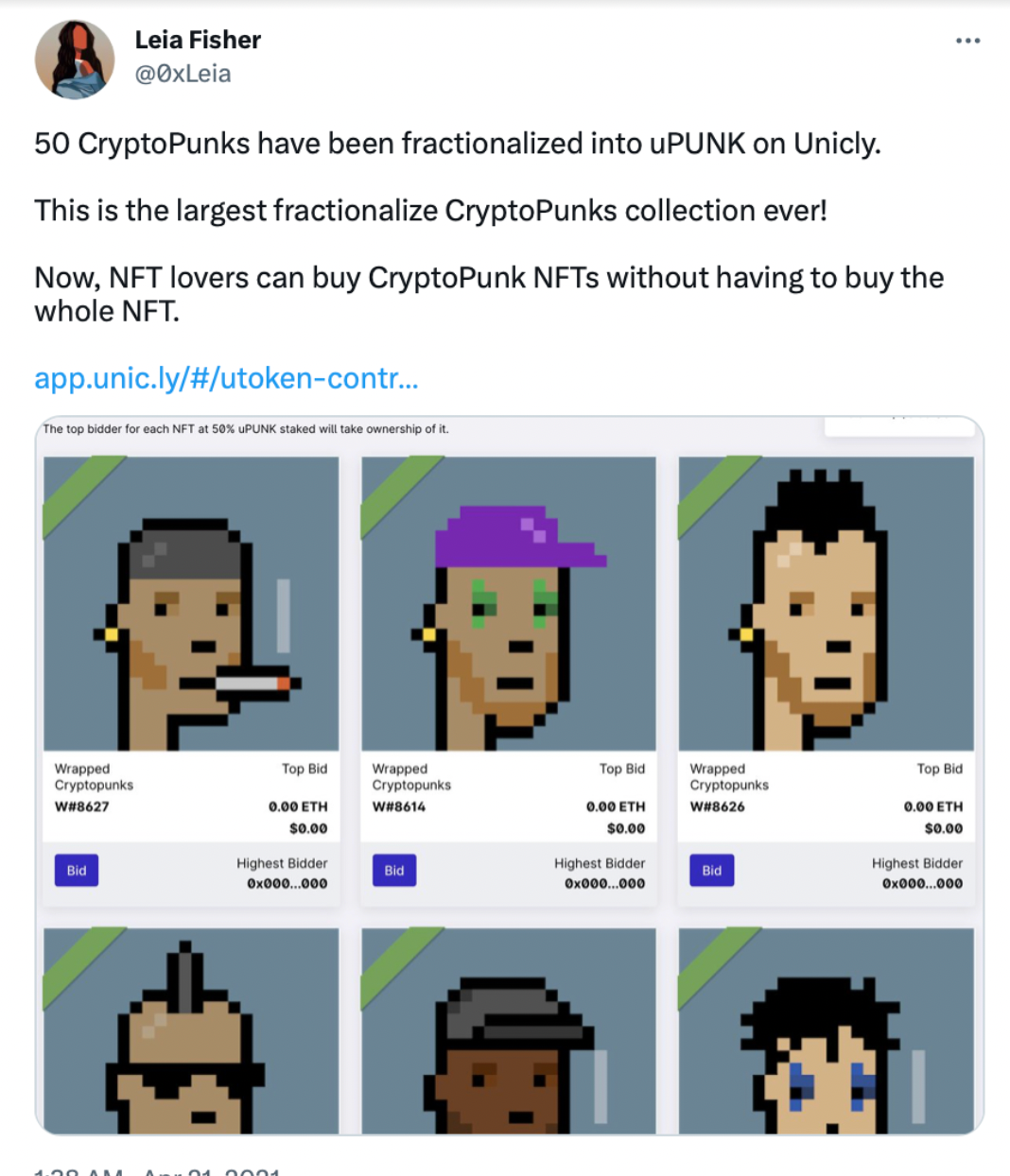Industry
Feb 16, 2023Fractional NFTs: Driving Mainstream Adoption Through Accessible Ownership
Imagine stepping into a world-class art gallery, your eyes scanning the room in awe until they lock onto a breathtaking masterpiece that captures your imagination. In your mind's eye, you envision that artwork hanging in your living room, becoming the centerpiece of your home, but quickly realize that owning such a rare and valuable piece of art is a dream beyond your means. However, with the emergence of Fractional NFTs, that dream is no longer out of reach. With just a few clicks, you can now own a piece of that artwork, and it can be yours to display and admire at any time.
Fractional NFTs allow art lovers to own a piece of a valuable artwork, breaking it down into fractional shares that can be bought and sold on supporting blockchain networks. This revolutionary concept has the potential to democratize the art world, enabling individuals who previously had limited access to high-end art to become part owners of rare and valuable pieces.
Fractional NFTs or F-NFTs, are a more affordable way to own a share of a non-fungible token, which makes digital assets accessible to more investors. An NFT can be broken into fungible ERC-20 tokens of equal value, which can be purchased on secondary markets by a broader range of investors. This brings greater liquidity and price discovery, while benefiting the artists with greater exposure to a wider audience in a more liquid market. However, there is a buyout option, which could cause you to lose control of your asset if someone outbids you. Popular F-NFTs include Cryptopunks and Grimes’ NFT art.
In this article, we will explore how fractional-NFTs are changing the game for art ownership and inspiring widespread adoption in the real world.

“Battle of the WarNymphs" by Grimes. Sold as a fractionalized NFT on Nifty Gateway.
How do Fractional NFTs work?
Fractional NFTs or F-NFTs, are a type of non-fungible token that allows multiple owners to hold a fractional share in a single asset, such as a piece of artwork, a collectible, or a real estate property. These tokens are created by dividing the ownership of an asset into smaller, equal parts, which are then represented as unique NFTs on a blockchain network. Each fractional NFT represents a specific percentage of the asset's ownership and is unique in its own right, with its own digital signature and metadata.
The process of creating fractional NFTs involves a handful of steps. First, the asset is appraised to determine its value, and then its ownership is divided into smaller, equal parts. Each fraction is then tokenized as a unique NFT, with a specific value and ownership structure. The fractional NFTs are then made available for sale, either through a centralized marketplace or a decentralized exchange, where buyers can then bid or purchase fractions of the asset using cryptocurrency. Once purchased, the fractional NFTs can be traded or sold just like any other NFT.
Fractional NFTs offer several benefits over traditional ownership structures. For one, they allow for greater liquidity, as owners can sell their fractional shares at any time without having to sell the entire asset. Additionally, they allow for wider access to valuable assets, as smaller investors can now own a piece of art or real estate that would otherwise be out of reach. Lastly, they provide a more transparent and secure ownership structure, as ownership records are stored on a public blockchain and can be easily audited and verified.

Applying F-NFTs to the Real Estate Market
Fractionalized NFTs can also be utilized for real estate investments. This method of investing differs significantly from traditional real estate investment trusts (REITs). With REITs, investors pool their money to invest in properties, and they receive dividends based on the performance of the portfolio.
With fractionalized NFTs, investors have direct ownership of a specific property. This means they can sell their stake on the secondary market or hold onto it to receive rent or appreciation. Fractional NFTs can also lower the barrier to entry for real estate investment. This makes it more accessible for retail investors to get a piece of high-value real estate. For example, someone could own a piece of a luxury beachfront property in Hawaii without needing to spend millions of dollars on the whole property.
By utilizing F-NFTs, investors can participate in a range of real estate investments with fractional ownership. It's a more democratized form of investment that opens the doors for more people to participate and gain exposure to the real estate market.

The traditional real estate industry has been disrupted by the rise of NFTs. In 2021, a homeowner pushed the boundaries by selling both their physical property and a psychedelic NFT on OpenSea.
Access the Next Generation of Digital Assets with Chain NFTs
Fractional NFTs have the potential to revolutionize the way we invest in art, real estate, and other high-value assets. By making these investments more accessible and affordable, fractional NFTs are democratizing ownership and opening up opportunities for a wider range of people. Not only do they offer the potential for greater returns, but they also provide greater transparency, security, and liquidity compared to traditional investment methods.
As the adoption of fractional NFTs continues to grow, we can expect to see more innovative use cases arise in the near future. To take advantage of the limitless opportunities available in the NFT space, Chain NFTs provides companies with a unique opportunity to leverage blockchain technology and NFTs to achieve their business goals in the decentralized space. From design to deployment, Chain NFTs is a comprehensive solution that empowers brands to explore the potential of the Web3 industry with confidence, while providing the support of blockchain engineers, marketing campaigns, and NFT specialists.
As the market for fractional NFTs and other blockchain-based solutions continues to rise, we can expect to see even more innovation and disruption across various industries, with more people benefiting from the power of decentralized technologies. So whether you're an art enthusiast or a real estate investor, fractional NFTs are definitely worth keeping an eye on.
DISCLAIMER: NOT FINANCIAL OR INVESTMENT ADVICE
The information provided in this article does not constitute investment advice, financial advice, trading advice, or any other sort of advice and you should not treat any of the website’s content as such. Do conduct your own due diligence and consult your financial advisor before making any investment decisions.
About Chain
Chain is a blockchain infrastructure solution company that has been on a mission to enable a smarter and more connected economy since 2014. Chain offers builders in the Web3 industry services that help streamline the process of developing, and maintaining their blockchain infrastructures. Chain implements a SaaS model for its products that addresses the complexities of overall blockchain management. Chain offers a variety of products such as Ledger, Cloud, and NFTs as a service. Companies who choose to utilize Chain’s services will be able to free up resources for developers and cut costs so that clients can focus on their own products and customer experience. Learn more: https://chain.com.
Connect with Chain for the latest updates:
Twitter: twitter.com/Chain
Telegram: t.me/Chain & https://t.me/ChainAnnouncements
Medium: blog.chain.com
Instagram: instagram.com/Chain
Chain News & Updates
Latest News & Updates
Sign up for the Chain Newsletter - a weekly roundup of new platform features and the latest from the industry.
